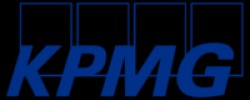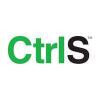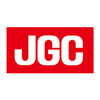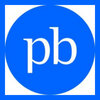PMO Manager
20+ PMO Manager Interview Questions and Answers

Asked in KPMG Global Services

Q. How do you implement PMO activities in the midst of resistance?
Implementing PMO activities in the midst of resistance requires effective communication, stakeholder engagement, and change management strategies.
Communicate the benefits of the PMO activities to stakeholders to gain their buy-in
Engage with key stakeholders to address their concerns and involve them in the decision-making process
Implement change management strategies to help employees adapt to the new PMO activities
Provide training and support to ensure successful implementat...read more
Asked in EDF International Networks

Q. How do you document important aspects of a project?
Document important project information through detailed reports, meeting minutes, and project plans.
Create detailed project plans outlining objectives, timelines, and resources.
Keep thorough meeting minutes to track decisions, action items, and discussions.
Maintain comprehensive project documentation including status reports, risk registers, and issue logs.
PMO Manager Interview Questions and Answers for Freshers

Asked in Werq Labs

Q. Technologies and standards used and followed in the relevant industry so far. Agile methodologies used and metrics used
Agile methodologies and metrics commonly used in the industry include Scrum, Kanban, and Lean. Metrics such as velocity, burndown charts, and cycle time are often utilized.
Agile methodologies commonly used: Scrum, Kanban, Lean
Metrics used: velocity, burndown charts, cycle time
Scrum involves sprints, daily standup meetings, and sprint planning
Kanban focuses on visualizing work, limiting work in progress, and continuous delivery
Lean emphasizes eliminating waste, delivering valu...read more

Asked in Capgemini

Q. How do you address multi-functional jobs in fiber deployment?
Effective multi-functional job management in fiber deployment involves coordination, communication, and strategic planning.
Establish clear roles and responsibilities among team members to avoid overlap and confusion.
Utilize project management tools like Trello or Asana to track progress and tasks across different functions.
Conduct regular cross-functional meetings to ensure alignment and address any challenges promptly.
Implement a feedback loop where teams can share insights ...read more

Asked in LTIMindtree

Q. What is your knowledge regarding the checking process?
The checking process involves verifying and validating project deliverables to ensure quality and accuracy.
Checking process involves reviewing project documents, deliverables, and outcomes.
It includes verifying that project requirements are met and that deliverables meet quality standards.
Checking process may involve using tools such as checklists, templates, and quality assurance processes.
Regular checking helps in identifying and resolving issues early on in the project lif...read more
Asked in EDF International Networks

Q. How can late delivery charges from customers be avoided?
To avoid late delivery charges from customers, establish clear timelines, communicate effectively, monitor progress regularly, and address any delays promptly.
Establish clear timelines for each project or delivery
Communicate effectively with customers about expected delivery dates and any potential delays
Monitor progress regularly to ensure projects are on track
Address any delays promptly by identifying the root cause and implementing corrective actions
Consider implementing p...read more
PMO Manager Jobs



Asked in EDF International Networks

Q. What is the impact of hindrances on a project?
Hindrances in projects can have a significant impact on project timelines, budgets, and overall success.
Delays in project delivery
Increased project costs
Decreased team morale and productivity
Risk of project failure
Negative impact on stakeholder relationships
Asked in Total IT Global

Q. What's the difference between risk and issue?
Risk is a potential future problem while issue is a current problem.
Risk is a potential future problem that may or may not occur.
Issue is a current problem that needs to be addressed.
Risk can be managed and mitigated to prevent it from becoming an issue.
Issue requires immediate action to resolve it.
Risk can be identified and assessed before it becomes an issue.
Examples of risks include project delays, budget overruns, and resource constraints.
Examples of issues include softwa...read more
Share interview questions and help millions of jobseekers 🌟


Asked in EFKON INDIA

Q. How do you define business ethics?
Business ethics refers to the moral principles and values that guide the behavior of individuals and organizations in the business world.
Business ethics involves making decisions that are fair, honest, and responsible.
It includes treating employees, customers, and stakeholders with respect and dignity.
Examples of ethical behavior in business include being transparent, avoiding conflicts of interest, and upholding legal and regulatory standards.
Business ethics also involves be...read more
Asked in EDF International Networks

Q. How do you convert a project plan from an RFP?
Convert project plan from RFP by analyzing requirements, creating a detailed schedule, assigning resources, and monitoring progress.
Analyze the requirements outlined in the RFP document
Create a detailed project schedule with milestones and deadlines
Assign resources based on skills and availability
Monitor progress regularly to ensure project stays on track
Communicate any changes or updates to stakeholders
Asked in EDF International Networks

Q. How do you handle hindrances in a project?
Hindrances in a project can be handled by identifying the root cause, creating a plan to address it, and communicating effectively with stakeholders.
Identify the root cause of the hindrance
Create a plan to address the issue
Communicate effectively with stakeholders to keep them informed
Seek input from team members on potential solutions
Monitor progress and adjust the plan as needed
Asked in EDF International Networks

Q. What is the objective of the organization?
The objective of an organization is to achieve its mission and goals by effectively utilizing resources and providing value to stakeholders.
To achieve the organization's mission and goals
To effectively utilize resources
To provide value to stakeholders
To ensure sustainability and growth
To maintain a competitive advantage in the market
Asked in EDF International Networks

Q. How do you handle risks and issues?
Handling risk and issues involves identifying, assessing, prioritizing, and mitigating potential problems to ensure project success.
Identify potential risks and issues early on in the project
Assess the impact and likelihood of each risk or issue
Prioritize risks and issues based on their potential impact on project objectives
Develop a risk management plan to mitigate or eliminate identified risks
Regularly monitor and review risks and issues throughout the project lifecycle
Comm...read more

Asked in Airtel Business

Q. How do you handle conflicting stakeholders?
Handling conflicting stakeholders requires effective communication, negotiation, and conflict resolution skills.
Identify the root cause of the conflict and address it directly
Listen to all stakeholders' perspectives and concerns
Facilitate open and honest communication between conflicting parties
Seek common ground and compromise when possible
Involve a neutral third party mediator if necessary

Asked in ZeAI SOFT

Q. How do you define priority work items?
Defining priority work items involves assessing urgency, impact, and alignment with strategic goals.
Assess urgency: Determine deadlines and time sensitivity. For example, a project with a looming deadline takes precedence.
Evaluate impact: Consider the potential benefits or risks. A work item that significantly affects revenue should be prioritized.
Align with strategic goals: Ensure the work item supports the organization's objectives. For instance, a project that enhances cus...read more

Asked in Sourcefuse Technologies

Q. How do you track project progress?
Tracking project progress involves monitoring key performance indicators, milestones, and deliverables to ensure projects stay on track.
Regularly update project schedules and timelines
Use project management tools to track progress and identify potential delays
Communicate with team members to get updates on tasks and milestones
Monitor key performance indicators to measure project success
Adjust project plans as needed to address any issues or delays
Asked in TQ Cert Services

Q. How would you prepare a schedule for the construction of a high-rise building with 3 basements and 25 floors?
Creating a schedule for a 3B+25 floor high-rise involves detailed planning and resource allocation.
Define project scope: Identify all tasks, such as site preparation, foundation work, and superstructure.
Develop a Work Breakdown Structure (WBS): Break down the project into manageable sections, e.g., excavation, concrete pouring.
Estimate durations: Use historical data to estimate how long each task will take, e.g., foundation work may take 3 months.
Sequence activities: Determin...read more

Asked in JGC Corporation

Q. How do you handle project delays?
To handle project delay, communicate with stakeholders, reassess timelines, identify root causes, adjust resources, and prioritize tasks.
Communicate with stakeholders to manage expectations and discuss potential solutions
Reassess project timelines and adjust deadlines accordingly
Identify root causes of the delay to prevent similar issues in the future
Adjust resources such as budget, manpower, or technology to expedite the project
Prioritize tasks based on critical path analysi...read more

Asked in Artech

Q. Area of domain experience
I have extensive domain experience in project management, specifically in IT and healthcare sectors.
Managed IT projects for software development and implementation
Worked on healthcare projects involving EMR systems and HIPAA compliance
Familiar with industry-specific regulations and best practices
Collaborated with cross-functional teams to deliver successful projects

Asked in EFKON INDIA

Q. What is gold plating?
Gold plating is the act of adding unnecessary features or functionality to a project beyond its original scope.
It is a common problem in project management where team members add extra features to impress stakeholders or clients.
It can lead to scope creep, delays, and increased costs.
Gold plating should be avoided as it does not add value to the project and can cause more harm than good.
An example of gold plating is adding unnecessary animations to a website that was original...read more

Asked in Expertise Contracting Company

Q. What is risk assessment?
Risk assessment is the process of identifying, analyzing, and evaluating potential risks to an organization or project.
Identify potential risks and their likelihood of occurring
Analyze the potential impact of each risk
Evaluate the level of risk and prioritize them based on severity
Develop strategies to mitigate or manage the identified risks
Regularly review and update the risk assessment to ensure it remains relevant
Example: A construction project may identify risks such as w...read more

Asked in Amadeus

Q. What is a project?
A project is a temporary endeavor undertaken to create a unique product, service, or result.
Projects have defined objectives, scope, and resources.
They have a start and end date.
Projects are different from ongoing operations or processes.
Examples: building a new website, launching a marketing campaign, implementing a new software system.

Asked in PolicyBazaar

Q. What is service?
Service is the act of providing assistance or help to others in a professional capacity.
Service involves meeting the needs and expectations of customers or clients.
It often requires delivering a product or performing a task for someone else.
Service can be provided in various industries such as healthcare, hospitality, and technology.
Good service is characterized by efficiency, effectiveness, and customer satisfaction.
Asked in Xpo India Shared Services

Q. Waterfall versus Agile methodology
Waterfall is a linear approach to project management, while Agile is iterative and flexible.
Waterfall follows a sequential process, while Agile allows for incremental development.
Waterfall requires detailed planning upfront, while Agile adapts to changes throughout the project.
Waterfall is best suited for projects with clear requirements, while Agile is ideal for projects with evolving requirements.
Waterfall is more rigid and less responsive to change, while Agile promotes co...read more

Asked in Genpact

Q. What are your salary expectations?
Negotiable based on experience and responsibilities
Expect competitive salary based on industry standards
Consider additional benefits such as healthcare, retirement plans, and bonuses
Discuss potential for performance-based incentives
Be open to negotiation based on experience and responsibilities
Research average salary for PMO Managers in your region

Asked in Capgemini

Q. PMO functions held in Jobs
PMO functions include governance, resource management, and project support to ensure successful project delivery.
Governance: Establishing project standards and methodologies, e.g., implementing PMBOK guidelines.
Resource Management: Allocating resources effectively, such as assigning team members based on skill sets.
Project Support: Providing tools and templates for project managers, like Gantt charts and risk management frameworks.
Performance Monitoring: Tracking project prog...read more
Interview Questions of Similar Designations
Interview Experiences of Popular Companies






Calculate your in-hand salary
Confused about how your in-hand salary is calculated? Enter your annual salary (CTC) and get your in-hand salary


Reviews
Interviews
Salaries
Users










